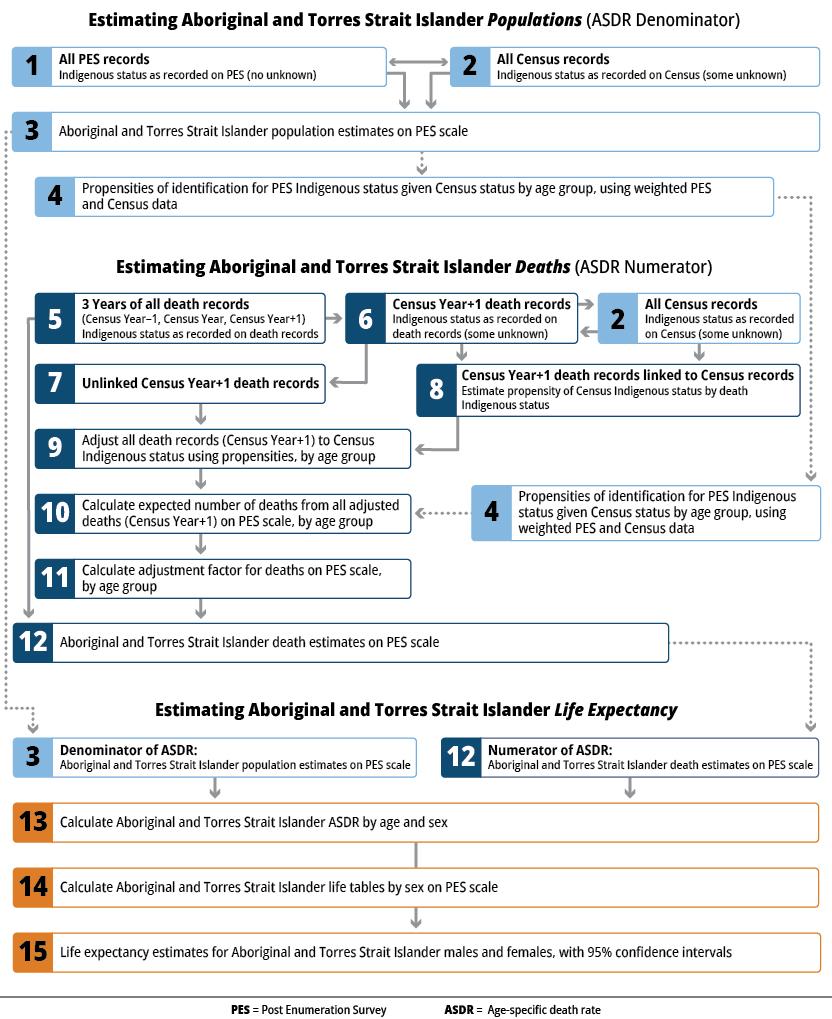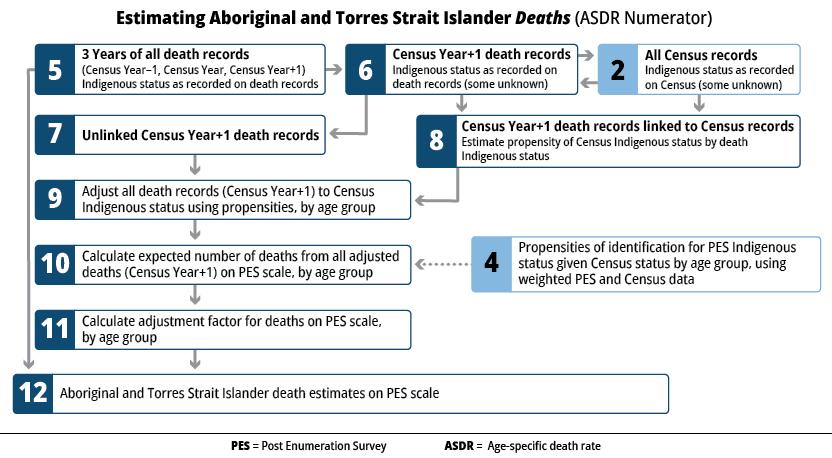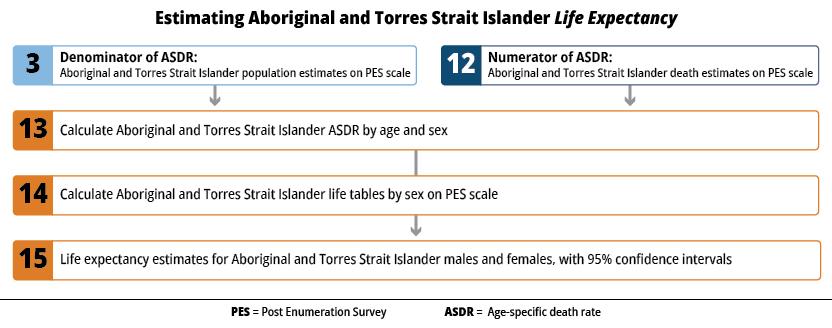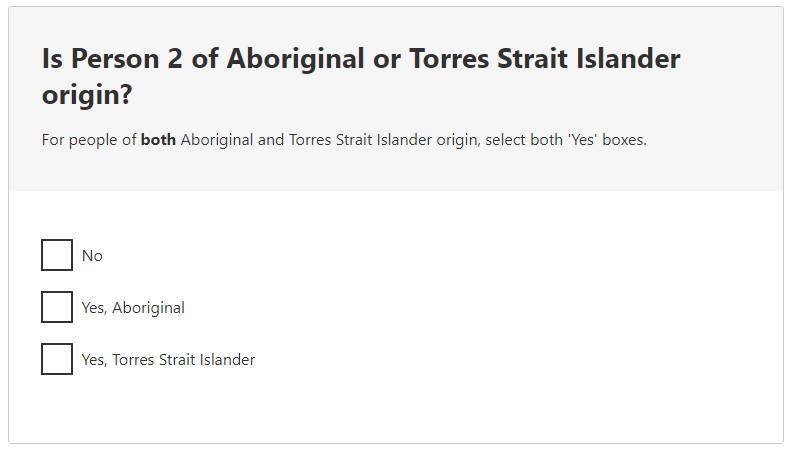Life expectancy estimates are important summary measures of the population health of Aboriginal and Torres Strait Islander people and are used to inform many significant government policies. Most notably, life expectancy estimates are used to measure progress toward the first target of the National Agreement on Closing the Gap.
Life expectancy at birth is an output of the broader suite of life tables and is produced using data from death records, the Census of Population and Housing and the Census Post Enumeration Survey (PES).
- Death records provide data on deaths of Aboriginal and Torres Strait Islander people by age, sex and location recorded by state/territory registrars on the death registration form (DRF) and the medical certificate of cause of death (MCCD).
- The Census provides a count of Aboriginal and Torres Strait Islander people by age, sex and location.
- The PES is a survey conducted shortly after the Census to assess coverage of the Census, including for Aboriginal and Torres Strait Islander people.
Data from the Census and the PES were used to produce the official population estimates for Aboriginal and Torres Strait Islander Australians, known as the Estimated Resident Population.
Data linkages between the Census and death records, and data linkages between the Census and PES, were used to produce adjusted death totals that account for potential underreporting and differences in reporting of Aboriginal and/or Torres Strait Islander status.
A key feature of the method is the conceptual consistency between the numerator (adjusted deaths) and the denominator (population estimates) used to calculate life expectancy.
The ABS also produces comparable life expectancy estimates for the non-Indigenous population.





